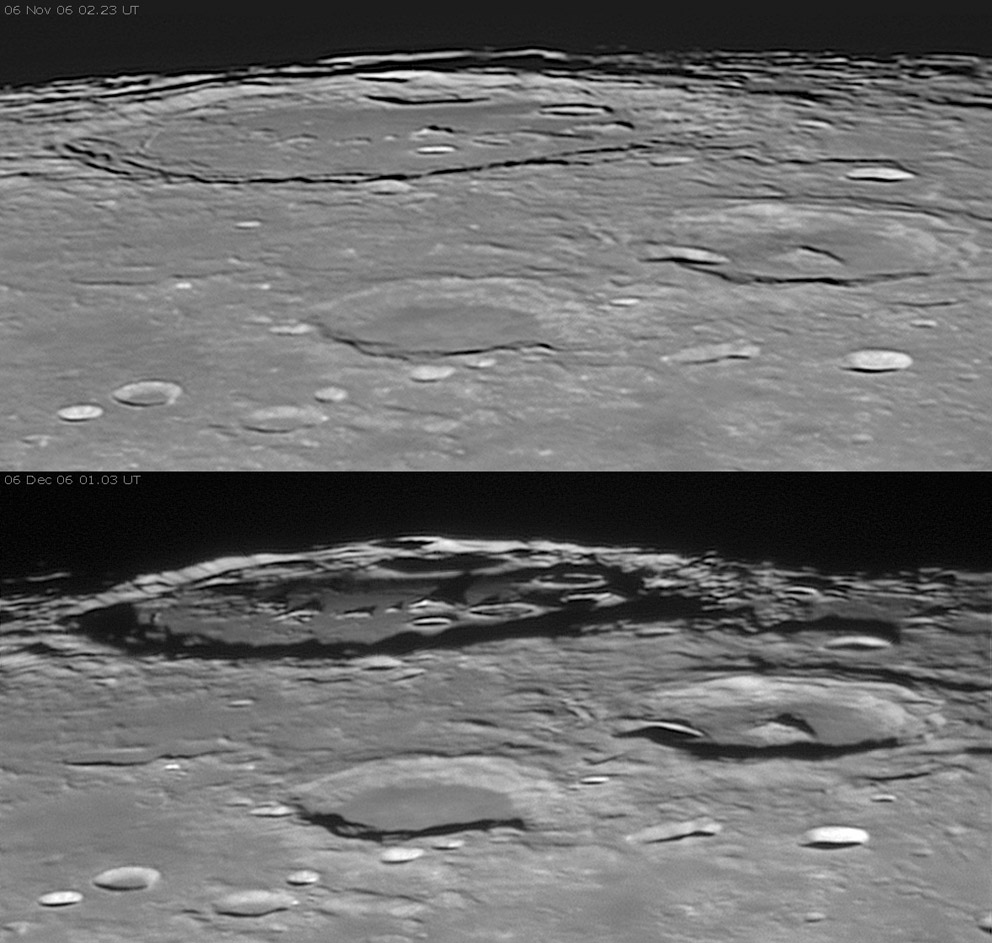
image by Stefan Lammel, Uxbridge, England
The NE limb, between maria Marginis and Humboldtianum, is marked by one large crater. Gauss is 177 km wide and of unknown depth - until someone measures shadow lengths on Stefan’s lovely low Sun image. Lunar Orbiter images reveal Gauss to be a floor-fractured crater (ffc), with rilles along the eastern, northern and western walls and down the middle of the floor. These rilles are essentially invisible from Earth, but are hinted at in these views. The bottom image also suggests that the eastern portion of Gauss’ floor may be somewhat domed - at least enough to cast a linear shadow. Doming and rilles are two common characteristics of ffc, and a third is pyroclastic deposits, which Clementine high Sun images show are there too. Amazing as it may be, there is a feature here even more interesting than Gauss. Check tomorrow’s LPOD to find out what it is - or do you see the subtle hint of it?
Technical Details:
06-Nov-06 02:23UT & 06-Dec-06 01:03UT. 10″ f4.8 Newtonian + DMK21-AF0 + Astronomik Red filter + 4x Powermate. Northeast up because it is much more comfortable viewing images with the limb at top.
Related Links:
Rükl chart 16
Stefan’s website
Yesterday's LPOD: A Christmas Present
Tomorrow's LPOD: A Dark Oblique Ray
COMMENTS?
Register, Log in, and join in the comments.



